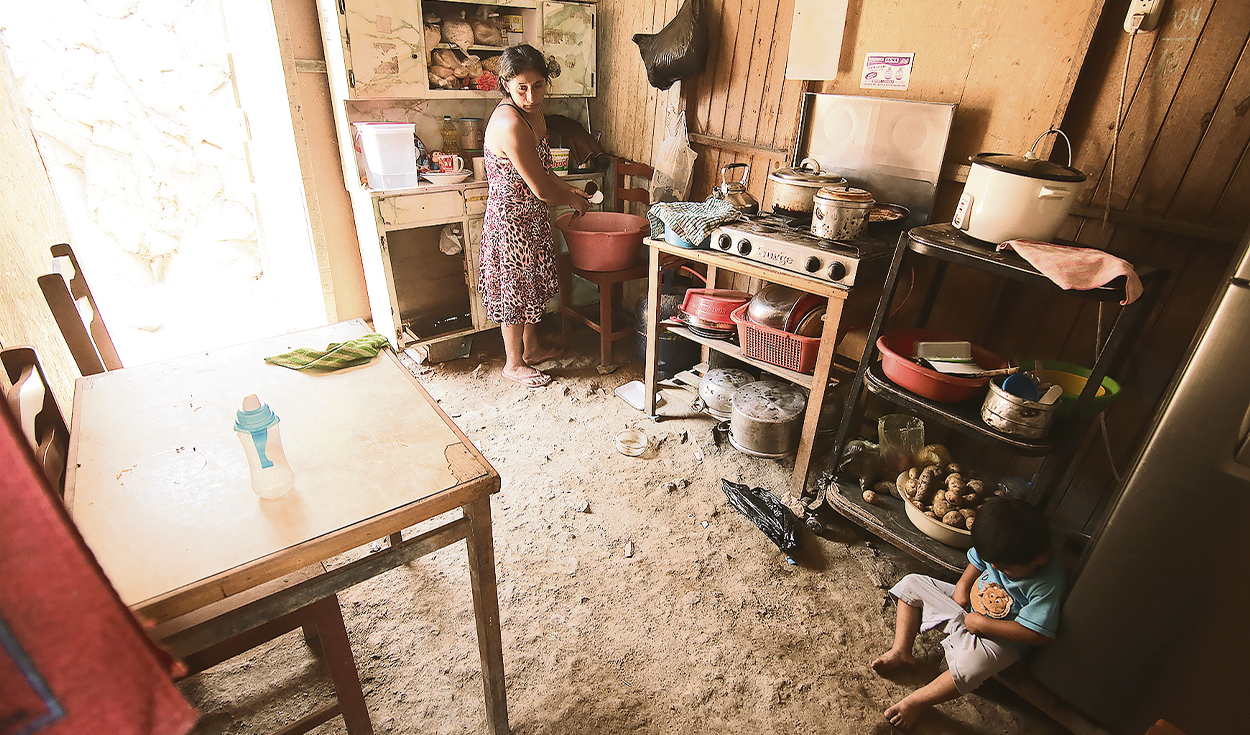
The recession expanded the universe of nuclear households headed by a woman, as it shot up from 42%, in 2019, to 57.2%; while with respect to 2022, the increase was 3 percentage points (54.2%), according to the latest report from the National Institute of Statistics and Informatics (INEI).
Thus, “The photograph of the poor home in Peru has a woman’s face”, according to Natalia Manso, Pacífico Business School professor and gender specialist.
Likewise, the INEI study reveals that the average age of the head of poor home He is around 50 years old. However, depending on the area of residence, this could vary. For example, in urban areas, the average age is 49 years, while in rural areas it is 53 years.
It is also observed that within these nuclear families led by women, 2.9% are two-parent and without children, 20.2% are two-parent with children and 34.2% are single-parent. Along these lines, the study shows that there is a strong increase of 8.4 percentage points in poor two-parent households with children and 5.6 percentage points in poor single-parent households compared to pre-pandemic figures.
“The increase in poverty especially punishes women and their children because they are the ones who still mostly take care of the children,” highlights Manso.
And poor households are not only larger in size, but are also made up of a greater proportion of children and adolescents, implying; consequently, higher rates of economic dependency in these households.
When analyzing the poor households By 2023, 73.7% of them have among their members at least one child under 18 years of age; while in non-poor households it is 47.5%.
Job gap
“The current participation rate of women in the economically active population in the world is close to 49%. On the other hand, that of men is 75%. Therefore, there is a difference of almost 26 percentage points and, in some regions, the disparity exceeds 50 percentage points,” explains Hellen Tipian, Andean zone leader of the Forge Foundation. Likewise, according to the INEI, of the 8 million 988,842 Peruvian mothers, 67.9% are part of the economically active population.
However, Tipian explains that employment gaps intensify even more when they are mothers. In that sense, a recent study by Princeton University and the London School of Economics on the “motherhood penalty” indicates that a significant proportion of working women who become mothers leave their jobs. 40% of the Peruvian workers They stop working immediately after having their first child and even after 10 years, 41% of them still have not reentered the labor market. This maternity penalty is higher than the average for Latin America and the Caribbean (37%).
Maternity penalty
Between 2023 and the first quarter of 2024, the National Superintendency of Labor Supervision (Sunafil) received a total of 190 complaints for non-compliance with the rights of working mothers in different sectors. The economic activities in which the greatest number of complaints were registered were services, wholesale and retail trade, financial intermediation (services that work in banks), transportation and agriculture.
Source: Larepublica
Alia is a professional author and journalist, working at 247 news agency. She writes on various topics from economy news to general interest pieces, providing readers with relevant and informative content. With years of experience, she brings a unique perspective and in-depth analysis to her work.











